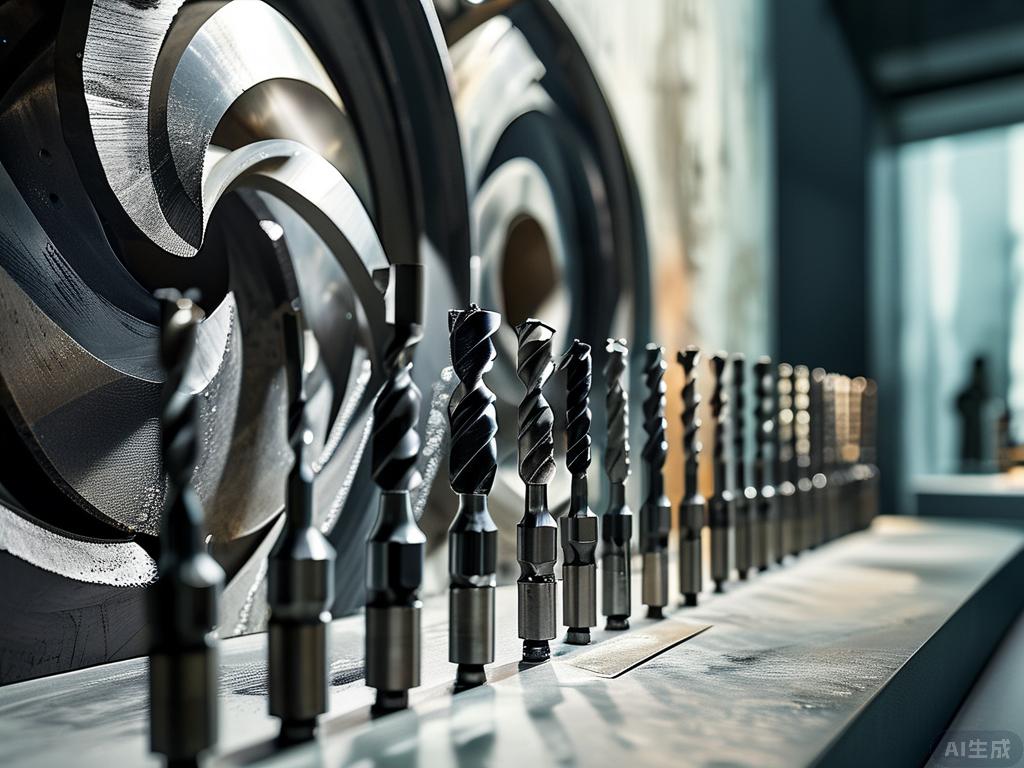
Global Machinist Quirks: Curious Cutting Tool Habits from Around the World
In the industrial symphony of the workshop, cutting tools are more than cold, rigid instruments of manufacturing—they are carriers of humanity’s millennia-old dialogue with matter. While a German technician meticulously measures to the micron with a micrometer, an Indian craftsman sprinkles turmeric powder into cutting fluid. A master in Tokyo examines iron filings with the same reverence as a Suzhou artisan flipping through a lunar calendar. These cultural codes, engraved into the machine bed and etched into the spiral flutes of HSS taps, whisper of Bavarian forests and crystallized Ganges fog within their carbide coatings. From the banks of the Rhine to the Yangtze Delta, global craftsmen are inscribing an unwritten chronicle of civilization—one chip, one turn, one tool at a time.

In a Stuttgart automotive plant, old-school toolmakers insist that apprentices measure the pilot hole three times before using an HSS tap. “One measurement and your hand might shake; two and your heart might panic—only the third one counts.”
In Munich, a cutting tool factory mounts worn-out carbide drill bits on the workshop wall. Beneath each one, a label shows how many parts it produced—like a hall of fame for fallen warriors.
At the Stuttgart Tool Museum, visitors flock to the “Metal Growth Rings Wall,” where 3,000 used carbide drill bits are arranged by wear pattern—tracing the evolution of German industrial precision.
An Osaka tool shop owner insists on cleaning taps with The Asahi Shimbun: “Newsprint ink absorbs cutting oil better than any rag. Look—this ten-year-old drill still shines!”
A veteran Tokyo lathe operator has a strange skill: he tosses a handful of iron chips onto a workbench and, from the scatter pattern, predicts how many hours the tool has left—often more accurately than electronic monitors.
A Varanasi tool shop’s traditional Ganges water quenching method was tested at MIT, revealing that silicate minerals suspended in the water form a nano-protective layer—boosting wear resistance by 19% over conventional processes.
In a New Delhi repair stall, a mechanic stirs turmeric into cutting fluid: “Our ancestors used turmeric to preserve food—we use it to preserve tools. Cuts through stainless without a spot of rust!”
A Chennai hardware vendor melts down broken drill bits to cast miniature Ganesha statues. Buy a new tool, get one free: “A worn-out bit still brings protection.”
In a Texan auto garage, machinists cool milling tools with chilled Coca-Cola in summer: “Sugar adds lubrication, bubbles reduce heat—it’s cheaper than pro fluids and smells like victory.”
A Kansas rancher developed the “Hay Stem Method”: checking thread precision by sliding dry grass stems through them. The way they snap indicates tap wear—within 0.05 mm accuracy of a CMM inspection.
In a Wenzhou workshop, the master sprays high-proof Chinese liquor on the milling bed. The chips curl perfectly into spirals—no need for bar snacks when the work smells like spirits.
In Guangdong, a factory accountant leads a company-wide grinding session every Lidong (Start of Winter). “Blades ground on this day are extra sharp. Our ancestors knew the rhythms of the earth.”
In Fujian, tool regrinders practice a secret art: syncing breath with grinding motion—132 reversals per minute. This rhythm yields micro fish-scale patterns on old tools, improving chip flow and surface finish.
Hidden Wisdom Behind Quirky Habits
What may seem like odd routines are often grounded in logic:
When the workshop lights go out, what remains on the workbench isn’t just metal shavings—but the silent legacy of humanity dancing with machines. What some dismiss as "folk methods" are in fact transgenerational dialogues in craftsmanship: a Coke bottle in Texas echoes Kyoto’s hand-wrapped blade traditions. Under the lens of materials science, they converge into the same essential logic. From micron-level fanaticism to cosmological reverence for the changing seasons, these cultural genes etched into tool steel preserve a warm trace of humanity in an age of industrial abstraction.
Like the trails left by end mills on polished steel, these practices record—without words—how we’ve carved our survival poems into the heart of iron.

 We like to do design according to all the customers' requirements, or offer them our new designs. With strong OEM/ODM capabilities, we can fill your sourcing demands.
We like to do design according to all the customers' requirements, or offer them our new designs. With strong OEM/ODM capabilities, we can fill your sourcing demands.